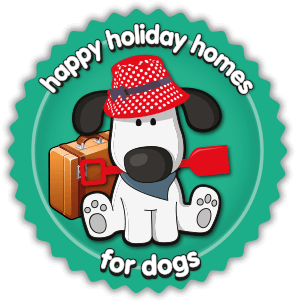A guide to giving your pet a health check at home…
We know how important it is to keep our pets happy and healthy, but how do you know if something is wrong? PDSA have put together some tips on how to do your very own Pet MOT at home.
Remember to make your pet’s check a happy, positive experience. Give them lots of fuss and attention plus a fun game or reward afterwards!
PDSA recommend giving your pet a nose-to-tail check to make sure you’ve got everything covered! If you notice anything on the below lists of what you shouldn’t see, it’s best to go to the vet for a check-up.
How to give your pet an MOT:
Nose
Your pet’s nose should be:
Moist and soft
Free from any snot or discharge
Clear and your pet should be able to breathe freely
Go to the vet if it:
Is dry
Is cracked
Has any snot or discharge
Sounds congested
Eyes
Your pet’s eyes should be:
Bright, clear and comfortable open
Free from any tears or discharge and there shouldn’t be a lot of tear staining
The fleshy area around the eyeball (conjunctiva) should be salmon pink.
Go to the vet if they are:
Red
Sore
Weepy
Holding them closed/squinting
Ears
Your pet’s ears should be:
A fleshy pink colour inside
Free of any nasty smells
Have no build-up of wax or excessive hair
The ear flap should be flat.
Go to the vet if they are:
Smelly
Uncomfortable
Waxy or have any discharge
Swollen
Holding their ear down or tilting their head to one side
Scratching or shaking their head a lot

*Only check your pet’s mouth if they are comfortable for you to do so. Visit your vet if they’re not used to having their teeth checked*
Teeth
Your pet’s teeth should be:
Clean and white
Free of cracks or breaks
Free of staining
Remember to check for any missing teeth
Go to the vet if they are:
Broken
Missing teeth
Stained (a plaque or tartar build-up will look like dark staining around their teeth)
Gums
Your pet’s gums should be:
A fleshy pink colour (although some pets will have darker pigments in their mouths, making their gums look darker. It’s best to check what’s normal for them)
Moist
Free of any lumps and bumps around their teeth.
Go to the vet if they are:
Swollen around the teeth
Pale or dry (this could indicate an urgent problem so call the vet straight away)

Coat
Your pet’s coat should be:
Free of knots
Free of any ticks, fleas, flea dirt or other parasites
Free of dandruff
*Go to the vet if their coat has any parasites or if you are concerned
Skin
Your pet’s skin should be:
Free of any rashes
Free of lumps and bumps
Free of bald patches
Have no bad smells
Have no wounds, discharge or infections.
Visit your vet if their skin is:
Sore
Itchy
Dry
Moist/wet in areas
*If you do notice any lumps and bumps, take your pet to the vet straight away so they can make sure they aren’t harmful tumours*
Legs
Your pet’s legs should be:
Free from wounds
Able to comfortably support your pet getting up and sitting down
Free of lumps and bumps
Their nails should be strong, not too long and at no risk of growing into their pads.
Visit your vet if they are:
Struggling to get up and down
Can’t support their own weight
Limping
If they seem stiff
If any claws are broken or too long
Tail
Your pet’s tail should be:
In a normal position for your pet
Able to move freely
Clean and free of any poop underneath
Have no sores on or around it.
Visit your vet if it is:
Hanging limp and not moving as it normally does
If there’s a build-up of poop underneath
If your pet is scooting their bottom
If your pet is chewing at their back or tail

Please give your vet a call if you notice anything unusual or if your pet is showing signs of being unwell. You can check a lot of the symptoms described above on the PDSA Pet Health Hub Here.
Please note: This website is not a substitute for visiting your vet. Always contact your vet if your pet is unwell. The Hub is the place to find free, factual information about your pet’s health – written by vets and vet nurses, packed full of useful articles, images and videos – this is the place to come if you are concerned about your pet.
You can also download your FREE Pet First Aid Guide HERE.
Remember to be positive while you’re checking your pet and give them a nice reward at the end!






